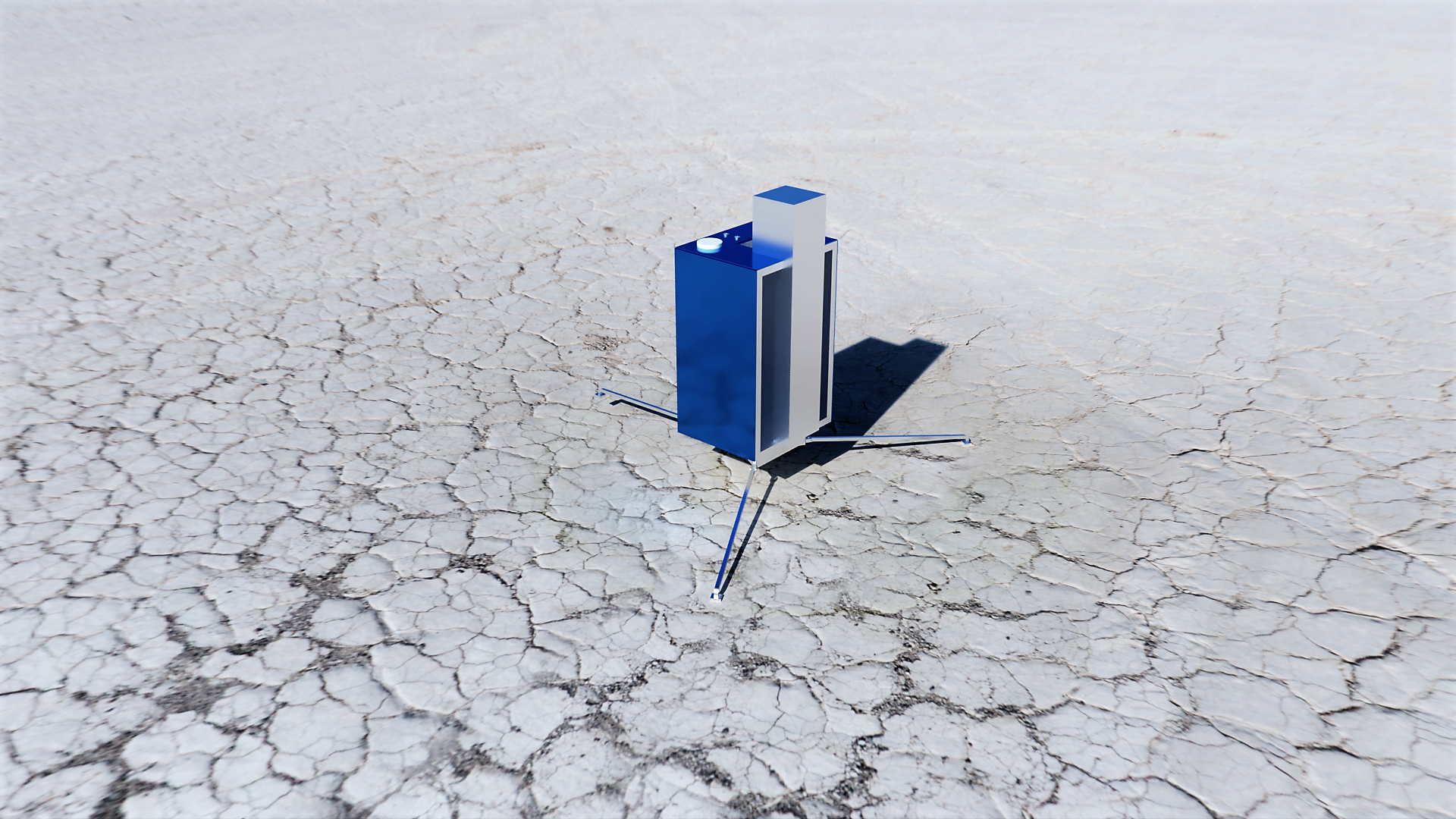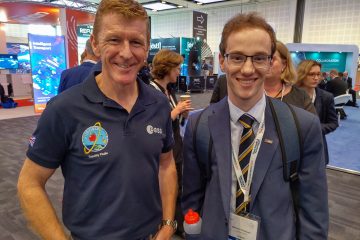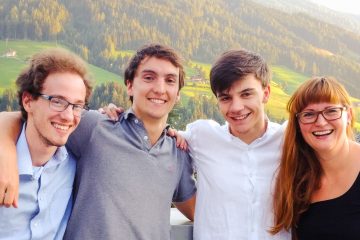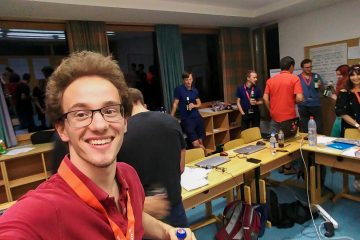Today has been a very busy day in Alpbach, with lots of work to prepare for the afternoon’s Final Design Review (FDR).
During yesterday’s Preliminary Design Review (PDR), we received many useful pieces of feedback from the reviewers on how we could strengthen our science case and the technical side of our mission to return a sample from a D-type asteroid. The team was working on aspects such as clarifying the flowdown of science requirements to engineering, and working out the finer details of the spacecraft subsystems.
Our mission also took on its final name: DESIRE, the D-Type Explorer for Subsurface Interior sample REturn.

Impression of the DESIRE lander on asteroid 2002 AT4
I spent the working on the Computer Aided Design (CAD) models of the orbiter and lander, with our lander taking on a look rather similar to ESA’s Philae. Similarly to the comet lander, it uses a drill at the back of the spacecraft, the back of which is clamped against the orbiter for the transfer to our target asteroid. The subject of our mission will be the asteroid 2002 AT4, a near Earth D-type asteroid orbiting between 1.03 and 2.71 Astronomical Units (AU) from the Sun.
One of the key phases of the mission is the recovery of the sample canister from the lander. Our recovery architecture involves the canister being fired up from the lander by a spring or moving platform, towards the orbiter, which will use its Attitude and Orbital Control System (AOCS) to hover overhead. Of course once the canister is in range of the lander, it has to be captured somehow. For this we’ve used a system developed by two of the Summer School lecturers, Michelle Lavagna and Peter Falkner, which has already undergone testing in the weightlessness of a parabolic flight. This gives it a Technology Readiness Level (TRL) of 6 out of 9, with the TRL being a key metric in space mission design and 6 generally accepted as the minimum for a part or system to be chosen for a mission.
FDR Results
Eventually, the time came for the FDR. The reviewers gathered again in our team room and we began our presentation, explaining our mission in more detail than yesterday’s PDR. The presentation went reasonably well. Some errors had not quite been brushed out from the PDR, but overall it was certainly a big improvement over the former review.
The judges’ questions were again thorough, and they raised several good points for us to address before the final presentation tomorrow. Overall though, we felt much happier than we had 24 hours ago – it felt like our mission was really coming together. On Thursday, we face our biggest presentation, in front of the whole Summer School cohort, but we’re looking forward to doing lots more work before then and making a strong case for our mission to a D-type asteroid.


